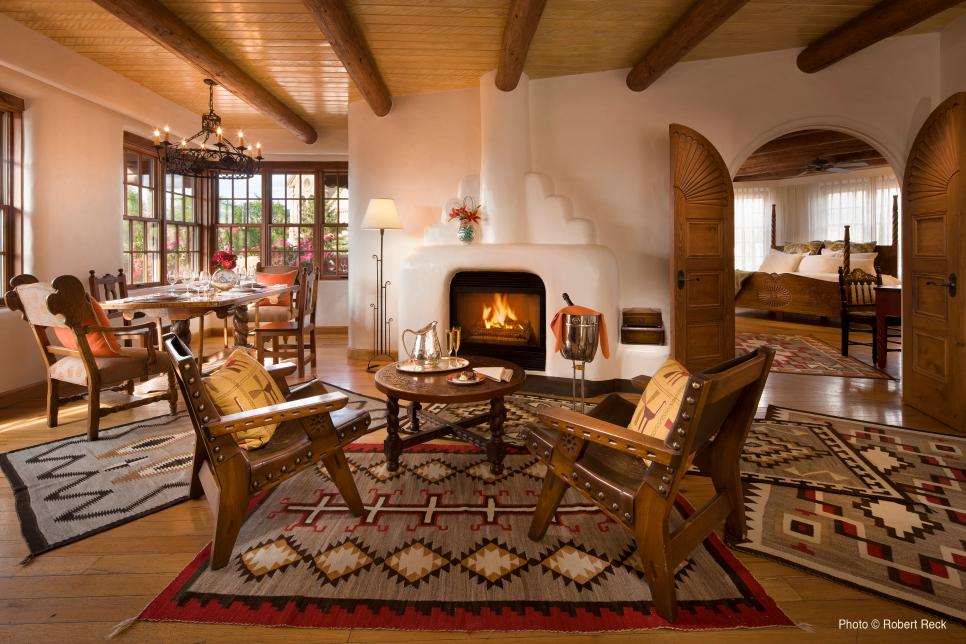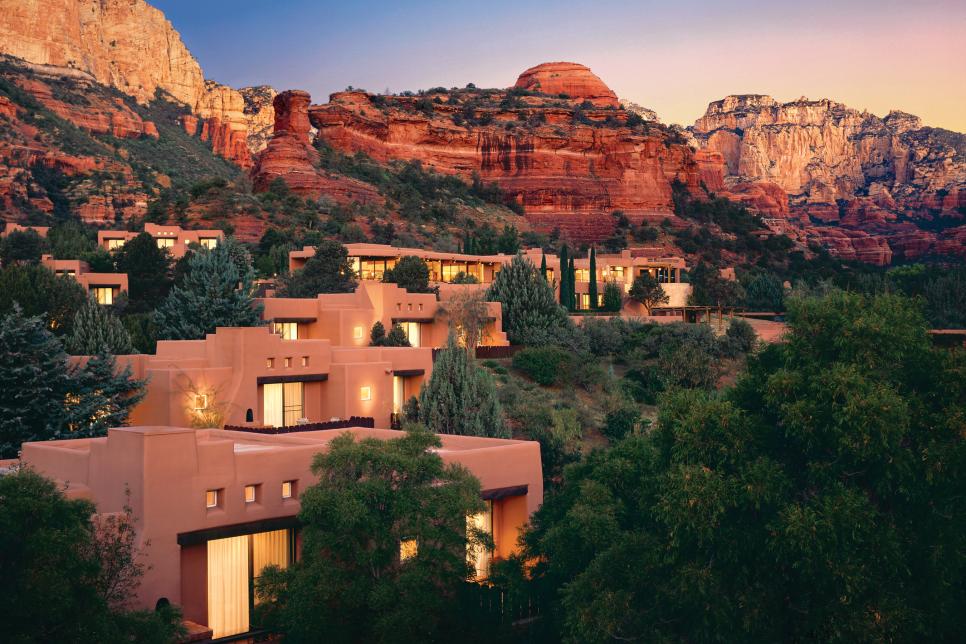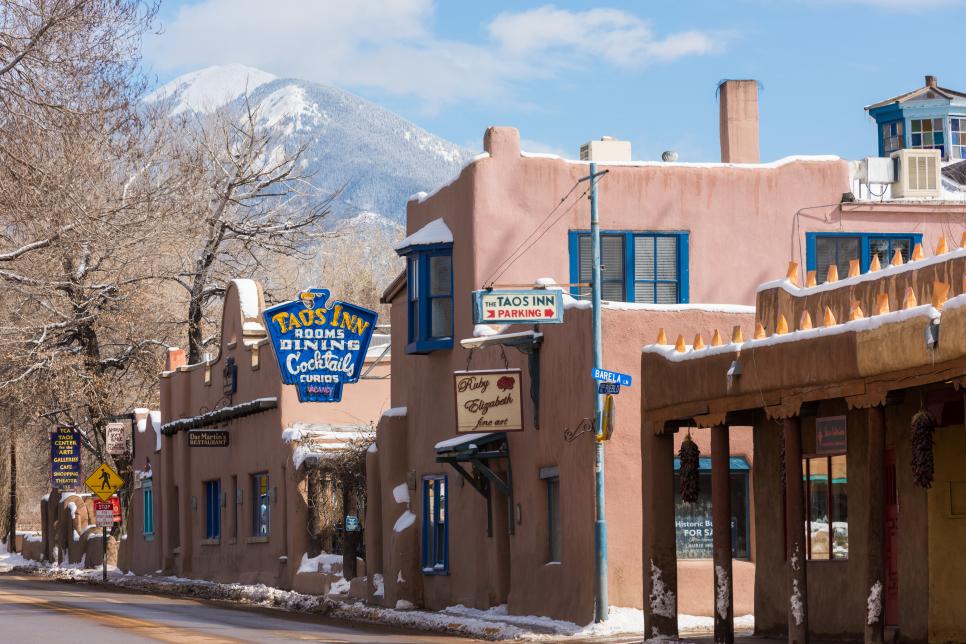
Enchantment Resort Sedona, ArizonaThe Native American civilization of northern Arizona is at the architecture at Enchantment Resort. The adobe construction is only 30 years old but its own low-slung casitas mix into the iconic red walls of Boynton Canyon, reminiscent of the ancient cliff dwellings of the Anasazi who lived in the Southwest a millennia ago. Though the place is not Native-owned, you will find Native American flute players at the lobby, Native ceremonies at the equinoxes, and the onsite restaurant, Che-Ah-Chi, takes its title from the Apache name for the region. The decoration is a sleek contemporary take on Southwestern rustic, with more pricey rooms athletic viga-and-latilla ceilings and kiva fireplaces.

Hermosa Inn Paradise Valley, ArizonaThis adobe inn began its life from the 1930s as the home and studio of cowboy artist Lon Megargee. He built the place himself using adobe bricks made onsite. The construction features traditional Southwestern architecture with hand-carved hardwood doors, kiva fireplaces and Spanish colonial corbels. Its gardens feature hundreds of cacti and other desert natives, as well as several drought-hardy, non-native plants which were coaxed to life through the magic of irrigation. The hotel also has a large assortment of Megargee's work on display, in addition to an artist-in-residence who makes artwork while you watch.

Taos Inn Taos, New MexicoThis amazing hotel in downtown Taos is hippie fabulous New Mexico at its finest. Once a block of 200-year old adobe homes, the inn's original owners bought them all in the 1930s and turned them into a rambling resort. The inn's 44 rooms have kiva fireplaces, two-foot-thick adobe walls and Spanish colonial furnishings, pristine northern New Mexico. The neon thunderbird sign out front advertises cocktails, curios and vacancies, pure roadside Americana. Its restaurant, Doc Martins, named for the town physician who was the inn's original proprietor serves local favorites such as chile rellenos, green chile stew and blue corn enchiladas.

Four Seasons at Troon Scottsdale, ArizonaThis swanky resort sits atop Pinnacle Peak outside Scottsdale, Ariz., Santa Fe's matronly Republican sister. It has Pueblo-revival style going on but its walls are practical stucco, not exotic adobe. Casitas and suites have kiva fireplaces, together with the suites going all-out Santa Fe viga-and-latilla ceilings, wood floors and Spanish colonial iron lighting fixtures. The grounds are landscaped with indigenous desert plants, embracing the arid surroundings instead of covering them with turf grass and boxwoods. There's a spa, golf, restaurants and a pub. Four Seasons also has hikes into the desert to gaze at stars and tequila tastings. Try pairing both for maximum effect.

Los Poblanos Historic Inn & Organic Farm Albuquerque, New MexicoThis 1930s farm turned into bed and breakfast from the Rio Grande Valley was created by John Gaw Meem, the legendary architect that made Santa Fe style. The main house is adobe and constructed in New Mexico territorial style, a design that came into vogue in the 19th century and integrated materials from the bricks, bigger doors and windows, and much more ornate trim. The expansive portal site (above) features murals above the windows painted by WPA artist Harry Garrison Miller. The property's formal Spanish-style gardens, using a cottonwood allee, rose gardens and Spanish tile fountains were designed by Rose Greely, a pioneer female landscape architect. The farm grows organic vegetables used to produce entrees at its onsite restaurant and lavender that's used in a line of spa products.

Inn and Spa at Loretto Santa Fe, New MexicoConstructed on the Website of a Catholic school that closed in the late 1960s after more than a century, the Inn and Spa at Loretto is four tales of Pueblo-style perfection. It had been built in the early 1970s when adobe, among the most ancient construction materials on Earth, came back into vogue and is an icon of Santa Fe style. You can remain in rooms decorated with cow skulls and kivas, get a Zero Gravity Manicure or head next door to the Loretto Chapel, constructed in the 1870s and the sole structure from the college staying, to work out how that the spiral Miraculous Staircase handles to stand with no center support. Legend says St. Joseph the Carpenter, aka Jesus' dad, constructed it, which locals say is the reason it doesn't stick to local building codes or the laws of physics.

Inn of the Five Graces Santa Fe, New MexicoArabian Nights meet the Southwest at this lavishly decorated bed and breakfast tucked into downtown Santa Fe off the Old Santa Fe Trail. Originally a bunch of standard adobe houses, its classic dealer-owners turned the area into a fantasy of dazzling mosaics, doors rescued from older world destroys, Tibetan artifacts, Kilim rugs, beehive fireplaces and Chihuly light fixtures. It is a rush of colour and imaginative energy, the ultimate luxe hippie destination. The city's famed Canyon Road art district is in the neighborhood, combined with San Miguel Chapel, a 400-year-old Spanish mission church.

No comments:
Post a Comment